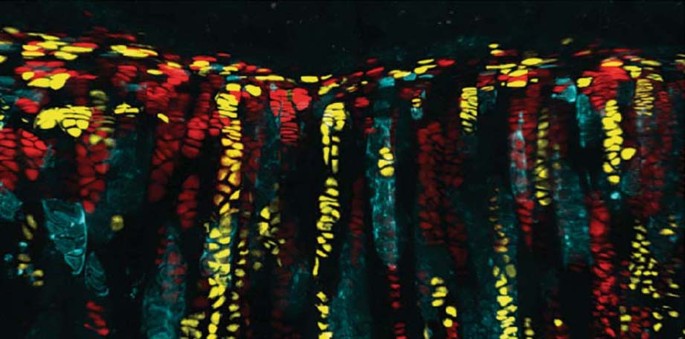
What makes bones grow? | Nature Reviews Endocrinology
- Select a language for the TTS:
- UK English Female
- UK English Male
- US English Female
- US English Male
- Australian Female
- Australian Male
- Language selected: (auto detect) - EN
Play all audios:

Access through your institution Buy or subscribe The growth plates are key to longitudinal growth during childhood and adolescence as they provide a continuous supply of chondrocytes.
However, how this supply of chondrocytes is maintained throughout the growth period has been an open question in the bone field. Now, a new study published in _Nature_ reveals that a stem
cell niche is present in the epiphyseal growth plate of mice, which supplies chondrocytes to the growing bone. Using this technique, the researchers were able to confirm previous theories
that chondroprogenitors are gradually depleted. However, they demonstrated that this depletion only occurs in early life in mice. In adolescence, a bony structure developed in the epiphysis,
which altered the microenvironment. Following the formation of this structure, the remaining chondroprogenitors were able to self-renew, undergoing symmetric cell division and expressing
novel stem cell markers. These changes enabled the growth plate to continue to supply the cells required for growth. This is a preview of subscription content, access via your institution
ACCESS OPTIONS Access through your institution Access Nature and 54 other Nature Portfolio journals Get Nature+, our best-value online-access subscription $29.99 / 30 days cancel any time
Learn more Subscribe to this journal Receive 12 print issues and online access $209.00 per year only $17.42 per issue Learn more Buy this article * Purchase on SpringerLink * Instant access
to full article PDF Buy now Prices may be subject to local taxes which are calculated during checkout ADDITIONAL ACCESS OPTIONS: * Log in * Learn about institutional subscriptions * Read our
FAQs * Contact customer support REFERENCES ORIGINAL ARTICLE * Newton, P. T. et al. A radical switch in clonality reveals a stem cell niche in the epiphyseal growth plate. _Nature_
https://doi.org/10.1038/s41586-019-0989-6 (2019) Article PubMed Google Scholar Download references AUTHOR INFORMATION AUTHORS AND AFFILIATIONS * Nature Reviews Endocrinology
http://www.nature.com/nrendo/ Claire Greenhill Authors * Claire Greenhill View author publications You can also search for this author inPubMed Google Scholar CORRESPONDING AUTHOR
Correspondence to Claire Greenhill. RIGHTS AND PERMISSIONS Reprints and permissions ABOUT THIS ARTICLE CITE THIS ARTICLE Greenhill, C. What makes bones grow?. _Nat Rev Endocrinol_ 15, 254
(2019). https://doi.org/10.1038/s41574-019-0189-3 Download citation * Published: 05 March 2019 * Issue Date: May 2019 * DOI: https://doi.org/10.1038/s41574-019-0189-3 SHARE THIS ARTICLE
Anyone you share the following link with will be able to read this content: Get shareable link Sorry, a shareable link is not currently available for this article. Copy to clipboard Provided
by the Springer Nature SharedIt content-sharing initiative
